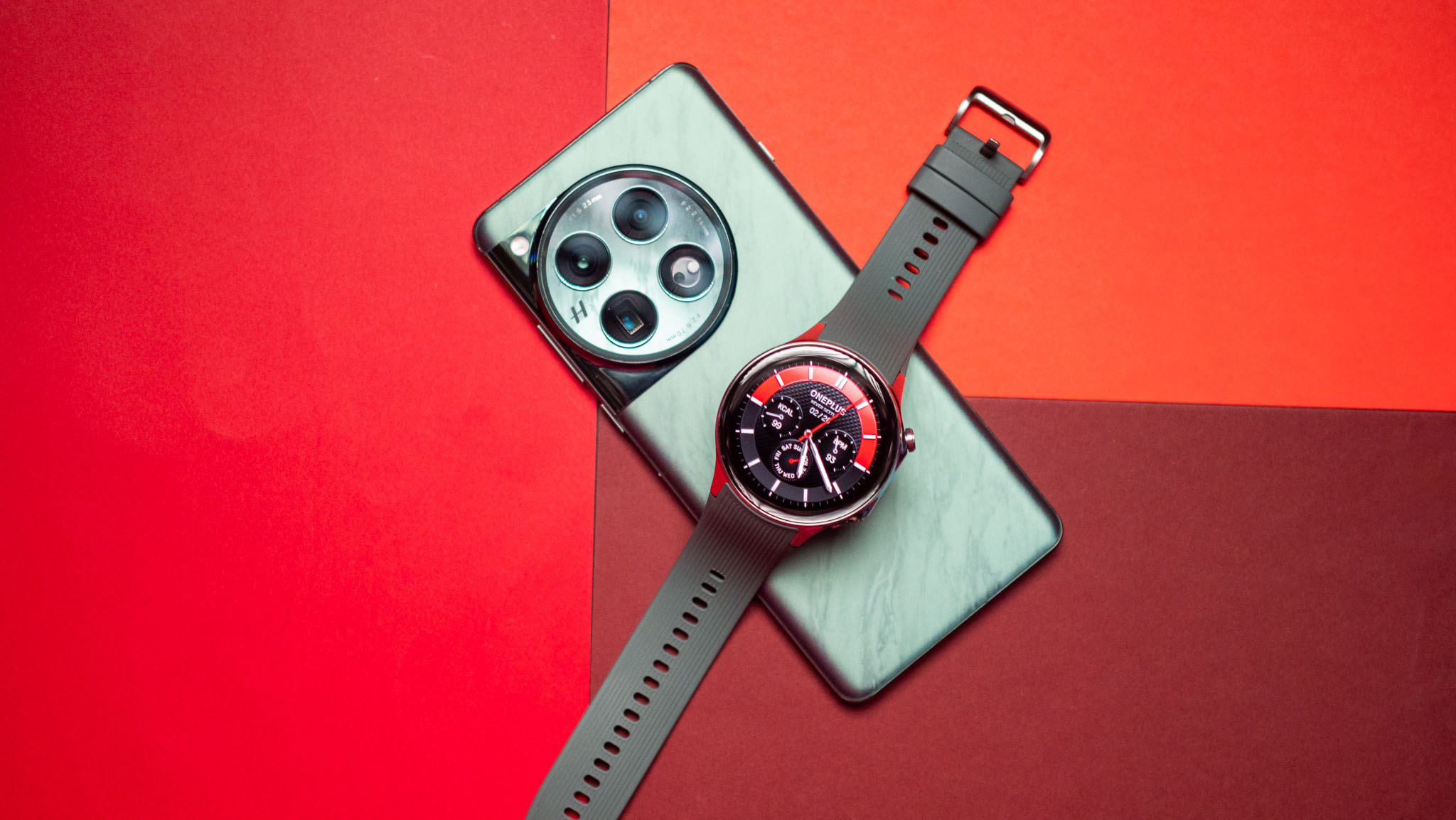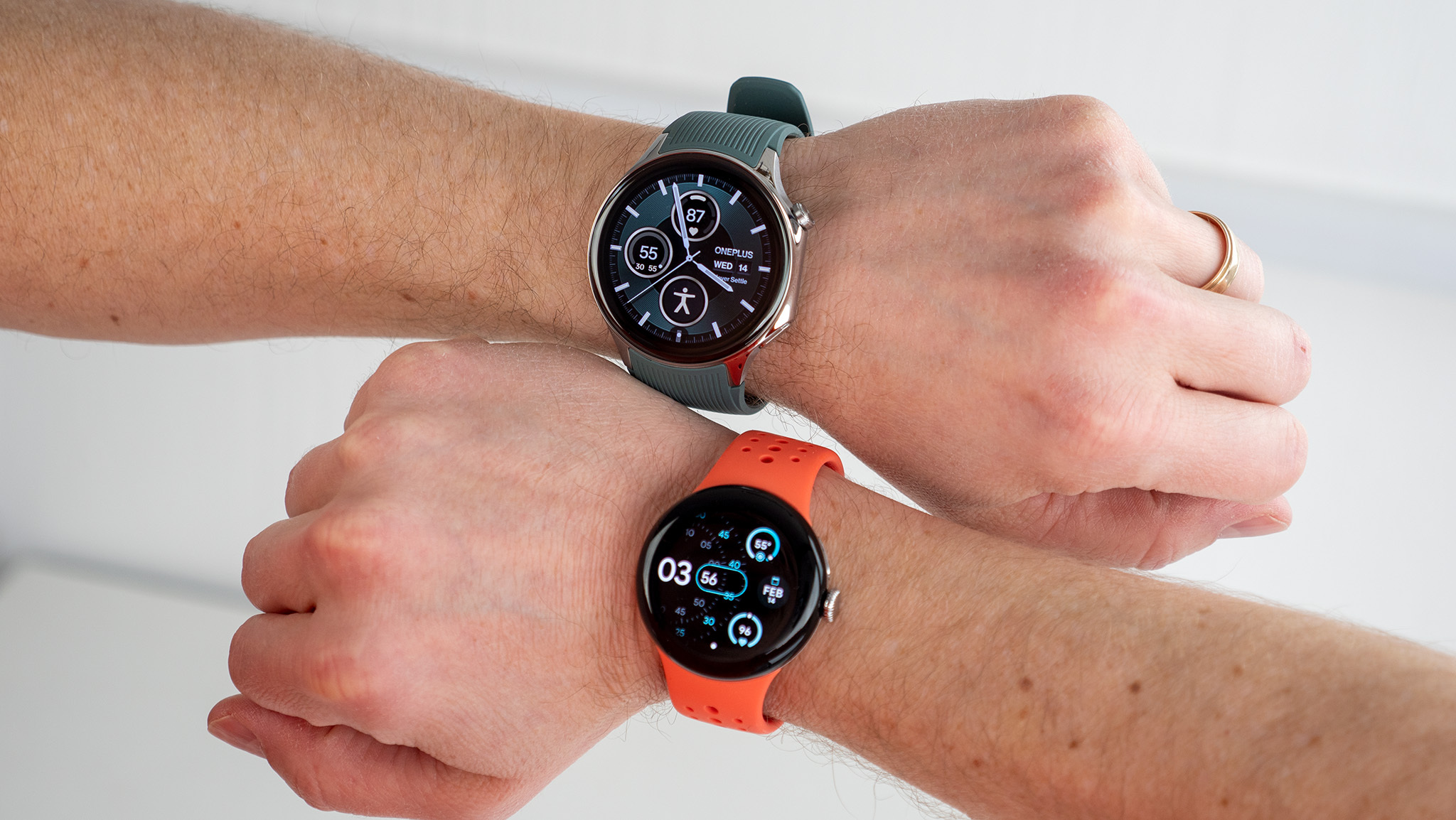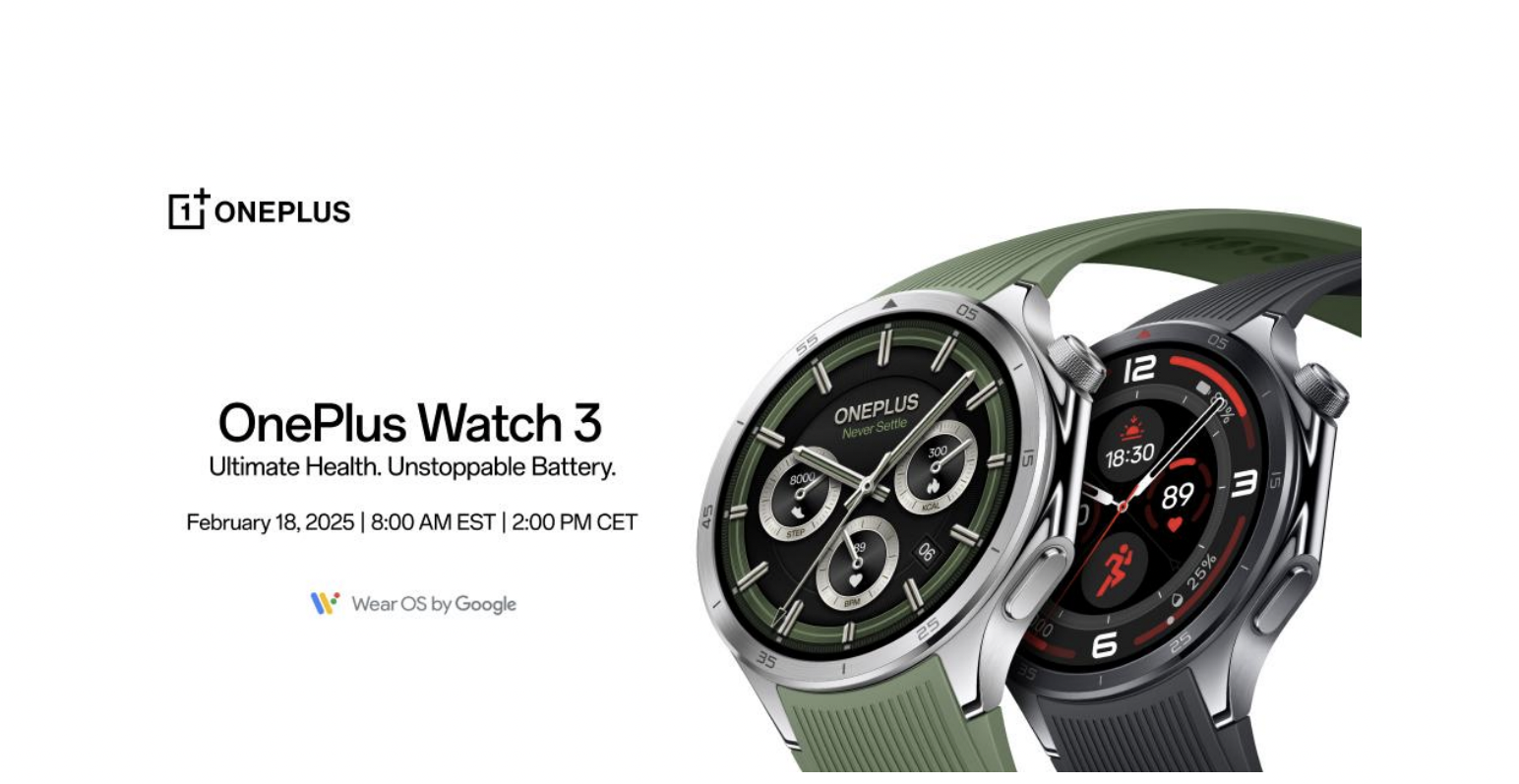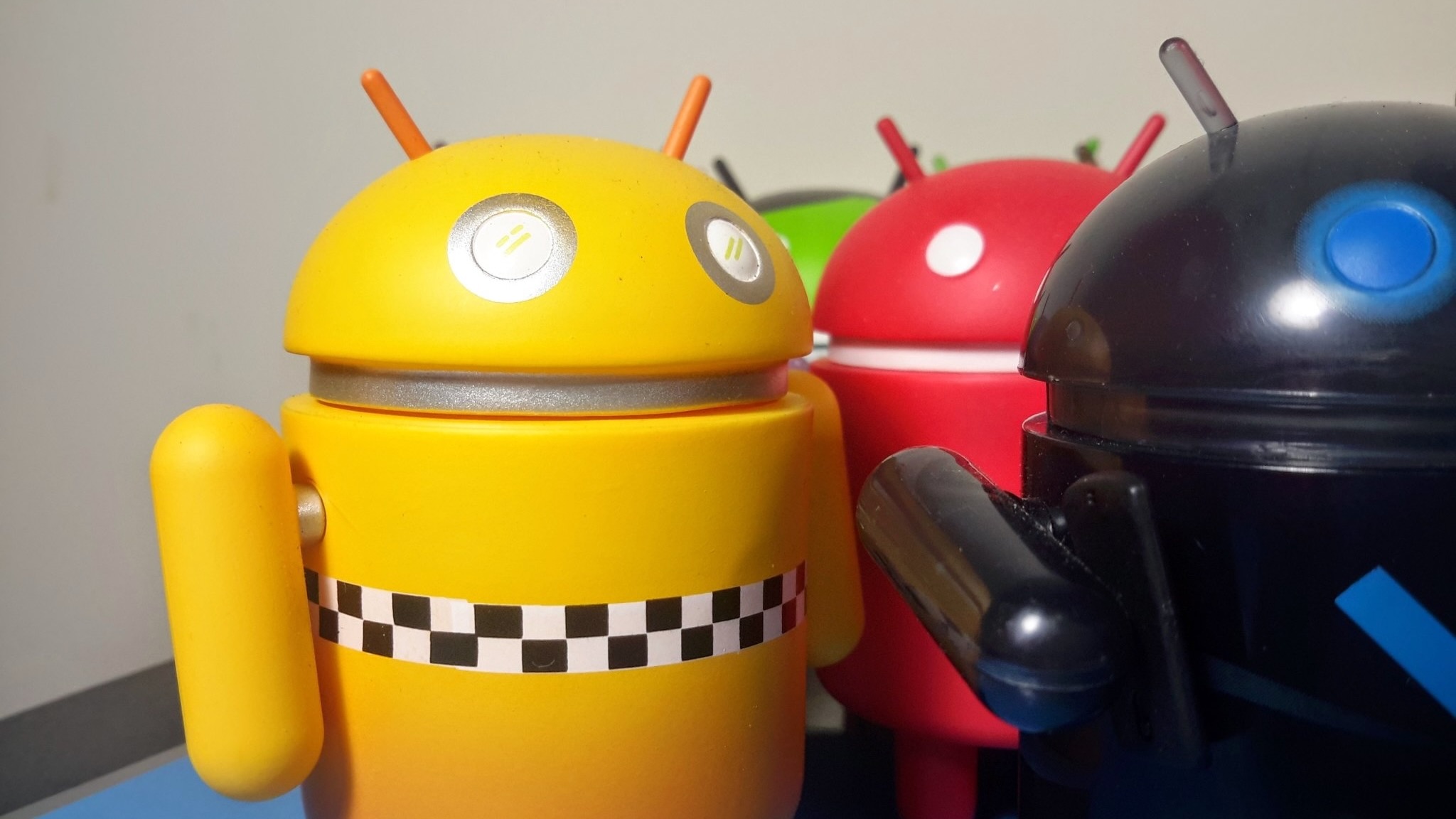The OnePlus Watch 3 is a bigger deal than you think — here's why
The OnePlus Watch 3's five-day battery won't live up to real-time usage, but it'll push "Ultra" watches to do much better.


My new weekly column focuses on the state of Wear OS, from new developments and updates to the latest apps and features we want to highlight.
The upcoming OnePlus Watch 3 is tapped to last five days per charge, and while we don't know its price yet, you can bet it'll cost much less than the Apple or Galaxy Watch Ultra while lasting much longer. It's time for OnePlus to light a fire under some big-name toes.
The OnePlus Watch 3 will officially launch on February 18 with some significant changes over the OnePlus Watch 2: a new titanium bezel, a rotating crown that's functional instead of decorative, a faster and more efficient coprocessor, and an "optimized" GPS antenna.
What matters most is that OnePlus squeezed another day of battery life for standard use (120 vs. 100 hours) and heavy use (72 vs. 48 hours) from the same Snapdragon W5 processor within a year. Pretty impressive!
Its 631mAh capacity — a 131mAh generational boost — isn't that different from the Mobvoi TicWatch Enduro and Atlas (628mAh), but those are both rated for 90 hours and use a very limited Essential mode to achieve extended battery life. The Galaxy Watch Ultra and Apple Watch Ultra 2 aren't that far behind at 590mAh and 564mAh, respectively, but they only last 60 or 36 hours with typical use.
What trick did OnePlus use to pull off this gap? Most of the credit goes to the new battery tech that it recycled from the OnePlus 13, but I think we should pay just as much attention to its new "BES2800" coprocessor — because it'll make or break the OnePlus Watch 3 experience. And I wonder if other brands will try to emulate OnePlus's method of success.
OnePlus's secret weapon got even stronger

Any Wear OS watch will use the Wear OS Hybrid Interface; it relegates low-power, background tasks like heart rate and notifications to the mobile coprocessing unit (MCU) to save battery life and leave the main, power-hungry cores dormant until they're needed for apps. But it was OnePlus that really harnessed that power on the OnePlus Watch 2 with its RTOS-running BES2700.
As effective as this system was for longevity, our reviewer found last year that this 12nm chipset seemed too slow to properly handle messages and sensor data with the same speed and reliability we're used to with Wear OS watches.
Be an expert in 5 minutes
Get the latest news from Android Central, your trusted companion in the world of Android
With the Watch 3, the main SoC is unchanged for Wear OS tasks, but now we have a 6nm BES2800 that OnePlus says will "ensure an optimal balance between long battery life and intelligent functionality."
With great power, paradoxically, comes greater efficiency. We saw with last year's Snapdragon 8 Elite how it didn't need efficiency cores because higher-clocked chips can hit the same benchmarks with significantly less power.
Our OnePlus Watch 3 review will be the real test, but we can assume these background RTOS tasks will now run with better efficiency on a 6nm chip than on a 12nm one. The question is, will other brands follow suit? Most current Wear OS watches have 22nm MCUs, which feels well short of the mark. But hardware aside, I wonder if relying on RTOS for certain tasks is something other watch brands should emulate.
Extra capacity and curious lab results
Smartwatches can only fit so much battery capacity before the design becomes too bulky for anyone to wear. That's why we've heard so much chatter recently about Samsung and Apple using solid-state batteries: They can't increase capacity without turning off fans of skinny, pretty watches, so they're biding their time for a denser battery with a higher Wh/L.
While they twiddle thumbs and wait for this unproven tech, OnePlus has stuck its mobile Silicon NanoStack Battery into its watch. A silicon-carbon or standard lithium-ion battery shares the same cathode, but the former mixes silicon and graphite for the anode, making these batteries more dense and resilient against extreme weather conditions.
A 22% capacity boost is nothing to sneeze at, but even without a spec sheet, we can assume the OnePlus Watch 3 will be heavy. One of our Watch 2 complaints was the absence of a smaller, lighter model, and it doesn't seem like that's changed here.
Wearing a Watch 3 won't be for the small-wristed, and it's fair to ask how far its battery would go with the halved capacity as the Pixel Watch 3 41mm (306mAh) or Galaxy Watch 7 40mm (300mAh).

It's also fair to point out that OnePlus's five-day estimate has some odd caveats. The laboratory conditions had the tester only getting 6.5 hours of sleep per day, streaming music to earbuds for 15 minutes, taking one five-minute call per day, and only using watch apps for about 20 minutes per day. And it assumes the phone-watch Bluetooth connection will be disabled for 10 hours a day, for some reason.
Even the "heavy use" scenario keeps the GPS workouts, music streaming, phone calls, and other applications fairly short and limited. For comparison, the Apple Watch Ultra 2's official 36-hour estimate includes 8 hours of LTE connection, double the GPS and music streaming and more clock checks. It feels less like they were stretching the battery life for marketing purposes.
Still, it doesn't really matter to me if the OnePlus Watch 3 perfectly hits five days or loses a day or two with real-world activity. What matters more is having that leeway built in, counterbalancing the inevitable loss of capacity you see on watches after a couple of years.
Kicking off an evolutionary year for smartwatch battery life

Last year was already a strong year for Wear OS because Wear OS 5 put a big emphasis on battery life efficiency with current hardware. But 2025 could be even more significant because it's the year we may finally get a new Snapdragon Wear chip.
Qualcomm's VP of wearables said the company's objective is to aim for "a week's worth of battery life" using Snapdragon chips. He further suggested that a combination of custom cores and RISC-V software could help Android watches trend in that direction.
But even before this paradigm shift, OnePlus is pushing the current Snapdragon hardware as far as it can go, and I think that other brands will take more notice than you might think.
OnePlus doesn't really compete with most other Android smartwatch brands in North America and Europe; IDC's latest report shows a vast majority of OnePlus & OPPO watches were sold in China. But it still hit nearly 8 million sold in three months, only a few million short of Samsung.
Apple Watches have a big Chinese market presence, but they've fallen short of Huawei and have Xiaomi and Oppo/OnePlus chasing them from behind. Even if Apple has a complacent stranglehold on the U.S. market, it can't stand pat with its 18-hour battery life if its Chinese rivals start making this look totally inadequate.
And if Apple makes a battery life push, Samsung (and its partner Google) will focus on keeping its lead and making Android watches sound superior on paper, even if they fall short in sales.
That's why, even if the OnePlus Watch 3 — and the OPPO Watch X2, its sibling/clone with near-identical specs — feel like niche products here, I predict that they'll kick off a smartwatch arms race (pun intended) and nudge the bigger brands out of their battery life complacency. None of them want to look deficient and behind the times.

Michael is Android Central's resident expert on wearables and fitness. Before joining Android Central, he freelanced for years at Techradar, Wareable, Windows Central, and Digital Trends. Channeling his love of running, he established himself as an expert on fitness watches, testing and reviewing models from Garmin, Fitbit, Samsung, Apple, COROS, Polar, Amazfit, Suunto, and more.
You must confirm your public display name before commenting
Please logout and then login again, you will then be prompted to enter your display name.
